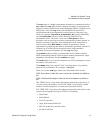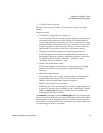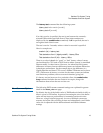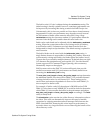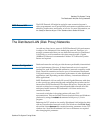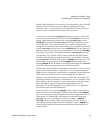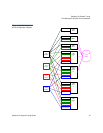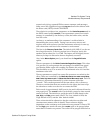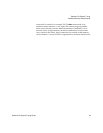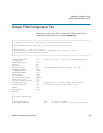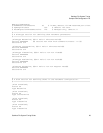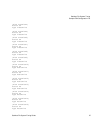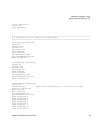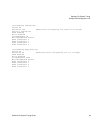StorNext File System Tuning
Windows Memory Requirements
StorNext File System Tuning Guide 23
mysteriously dying, repeated FSM reconnect attempts, and messages
being sent to the application log and
cvlog.txt about socket failures with
the status code (10555) which is ENOBUFS.
The solution is to adjust a few parameters on the
Cache Parameters tab in
the SNFS control panel (
cvntclnt). These parameters control how much
memory is consumed by the directory cache, the buffer cache, and the
local file cache.
As always, an understanding of the customers’ workload aids in
determining the correct values. Tuning is not an exact science, and
requires some trial-and-error (and the unfortunate reboots) to come up
with values that work best in the customer’s environment.
The first is the
Directory Cache Size. The default is 10 (MB). If you do not
have large directories, or do not perform lots of directory scans, this
number can be reduced to 1 or 2 MB. The impact will be slightly slower
directory lookups in directories that are frequently accessed.
Also, in the
Mount Option panel, you should set the Paged DirCache
option.
The next parameter is the
Buffer Cache NonPaged Pool Usage. This value
is in percent (%) and represents the percentage of available non-paged
pool that the buffer cache will consume. By default, this value is 75%.
This should be set to 25 or at most 50. The minimum value is 10 and the
maximum value is 90.
The next parameters control how many file structures are cached on the
client. These are controlled by the
Meta-data Cache low water mark, Meta-
data Cache
high water mark and Meta-data Cache Max water mark. Each file
structure is represented internally by a data structure called the
“cvnode.” The cvnode represents all the state about a file or directory.
The more cvnodes that there are encached on the client, the fewer trips
the client has to make over the wire to contact the FSM.
Each cvnode is approximately 1462 bytes in size and is allocated from the
non-paged pool. The
cvnode cache is periodically purged so that unused
entries are freed. The decision to purge the cache is made based on the
Low, High, and Max water mark values. The 'Low' default is 1024, the
'High' default is 3072, and the 'Max' default is 4096.
These values should be adjusted so that the cache does not bloat and
consume more memory than it should. These values are highly
dependent on the customers work load and access patterns. Values of 512
for the
High water mark will cause the cvnode cache to be purged when
more than 512 entries are present. The cache will be purged until the low



